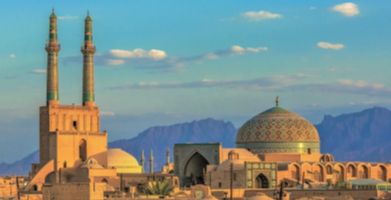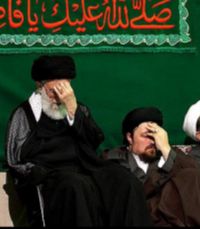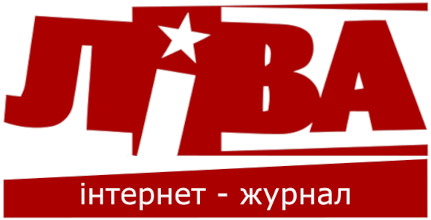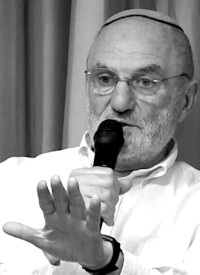
The assassination of Iranian General Soleimani and the group of Iraqis who met him drew the fervent approval of Ukrainian Internet patriots – although many of these people are certain to confuse Iran and Iraq among themselves, and will not immediately find these countries on a geographical map. Journalists, bloggers, and opinion leaders warmly approve of the actions of the US authorities, which, without declaring war, bombed foreign citizens on the territory of a state their army occupies. Moreover, they call for an early expansion of the practice of “pre-emptively combatting terrorism”, transparently pointing to potential targets for new air attacks – for example, somewhere in Donetsk or Lugansk.
In justifying the Baghdad airport crime, the post-Soviet intelligentsia tries to portray Iran as something of an absolute evil, in the fight against which international law can and should be violated – although they always refer to its norms when it comes to the issue of Crimea or Donbass. This country is called a threat to world democracy and the main perpetrator of endless Middle East wars, and people are urged to not regret launching missiles at it. According to liberal hawks, such aggressive policies will lead to the rapid collapse of the Islamic regime, which the local population is looking forward to. And the inevitable sacrifices and destruction of cultural monuments in this case appear to be an acceptable price in the name of the triumph of the values of the Free World.
However, the real situation in Iran is not at all similar to the template propaganda clichés that have been broadcast by most Ukrainian media outlets for years. Yes, conservative Islamic rule causes just resentment among many residents of this state. In Tehran, we saw young female students who defiantly removed headscarfs from their hair, and found that symbols of feminists and LGBT people, as well as portraits of Karl Marx, Che Guevara, and the popular philosopher Ali Shariati, who once hoped to reform Shiism in a democratic spirit by developing a local version of “liberation theology”, were being sold on its streets. And this in itself speaks about the sentiment in the public environment of the Islamic Republic – after all, it is impossible to imagine that in the middle of free European Kiev communist posters and books would be openly distributed.

Opposition and anti-clerical sentiment is strong enough, constantly fuelled by dissatisfaction with the economic crisis. But the fact is that the absolute majority of Iranian intellectuals strongly criticise US imperial policy and do not want to be “liberated” through occupation and bombing. This sentiment is deeply rooted in the consciousness of Iranian society. And it’s not just that Iranians are too well aware of the fate of neighbouring Iraq, destroyed by a “humanitarian” US military invasion – under the same false pretexts and with a demonstrative violation of international law. Much more important is the country’s own historical experience, which for decades was the main US satellite in the Middle East and was rightly considered the most obedient agent of Washington’s policy. In those years, Iran was totally dependent on Western democracies, very much reminiscent of modern Ukraine. And most of its inhabitants do not want to return to their not-so-distant colonial past.
The former Persia – as this Middle Eastern state was called until 1935 – was under the external administration of Great Britain and the United States after World War II. Foreign states had full control over Iran’s oil resources, defining the domestic and foreign policies of Shah Mohammad Reza Pahlavi. This generated huge profits for American and European companies – at the expense of poverty and disenfranchisement of the majority of the local population, forced to exist in the conditions of the preserved Middle Ages. And Prime Minister Mohammad Mosaddegh’s attempt to end foreign domination ended with a coup d ‘état in which the characteristic signs of Kiev’s Maidan can be easily seen. With the difference that the head of the deposed Iranian government did not at all resemble Viktor Yanukovych in his policies.
“The highly popular, democratically elected Iranian prime minister Mosaddegh (and Time magazine’s man of the year in 1951) nationalised all Iran’s entire petroleum industry. The outraged England sought the help of her World War II ally, the United States <…> Instead of sending in the Marines, therefore, Washington dispatched CIA agent Kermit Roosevelt (Theodore’s grandson). He performed brilliantly, winning people over through payoffs and threats. He then enlisted them to organize a series of street riots and violent demonstrations, which created the impression that Mossadegh was both unpopular and inept. In the end, Mossadegh went down, and he spent the rest of his life under house arrest. The pro-American Mohammad Reza Shah became the unchallenged dictator,” wrote American journalist John Perkins in his book.
With the support of the United States, the Iranian monarch declared a “White Revolution” designed to bring dignity, prosperity, and freedom to the country – through full integration into the global capitalist system. It was all about the implementation of forced market reforms, which were led by the local generation of “Chicago boys” – young experts and managers educated in Western universities, and fanatically committed to the interests of foreign capital. Iran has finally become a market for American and European imports, which has spent all the huge oil revenues. And this took place under the high-flown slogans about the fight against corruption and advanced modernisation of the state, which concealed the unprecedented backwardness and execution.
The Shah’s authorities declared their country a native part of the Western world, appealing to the mythologized heritage of the ancient Aryans – and set Iranians against the population of neighbouring Arab countries in every way. The state ideology was Persian nationalism, the symbol of which was the giant tower of the memory of the Shahs of the Aryan world, built of marble in the center of the Iranian capital, and renamed then Freedom Tower. The monarch decided to change the chronology in order to lead him from the ascension to the throne of Cyrus the Great, and with great fanfare celebrated in Persepolis the 2500th anniversary of the Persian monarchy, preparing for foreign guests a ton of black caviar – while nearby, in the same province, there were starving people affected by drought.
In order to consolidate control over Iran, President Dwight Eisenhower instructed the CIA to prepare footage for the Shah’s SAVAK intelligence agency, which was notorious for brutal torture and secret assassination attempts against opposition officials. Its agents killed the mentioned Ali Shariati in England – but this did not cause any reaction from official London. In addition, Washington sold entire arsenals of modern weapons to the Shah for petrodollars, and the US military used Iran’s territory in a confrontation with the USSR to threaten Transcaucasia and Central Asia. To this end, the CENTO military bloc – the Middle East version of NATO – was established and lasted until the fall of Mohammed Reza Pahlevi. All of this naturally led to a campaign of wholesale decommunisation, with the purge of the popular party “Tudeh” and other left-wing organisations orientated towards Moscow or Maoist Beijing.
Such policies produced impressive external results. The Tehran of the 70s looked little like the capital of an Islamic country, and on its streets there were luxury fashion boutiques and restaurants with expensive alcohol, where officials, oligarchs, and a prosperous clientele came in limousines. The country was ironically called the “Middle Eastern State of the United States”. The exposition of the one-of-a-kind museum, now equipped in the former American embassy, says that Western security services managed Iran’s political leadership in manual mode, and had its absolute loyalty – just like in the case of Poroshenko or Zelensky.
The only problem was that exclusively the ruling class benefited from the anti-social course of the pro-West government – to the detriment of the rest of the Iranians, who did not get a drop from the streams of oil profits. Outside the capital, the same poverty reigned, exacerbated by unrelenting feudal remnants. And despite the brutal repression, there was a constant rise in mass resentment with market reforms – multiplied by a protest against a humiliating dependence on Washington.
At the same time, in the vanguard of the anti-government movement there were initially representatives of secular movements – from “Tudeh” party Communists to activists of left-oriented Islamic movements, among which the most famous are “Organisation of Iranian People’s Fedai Guerrillas” and “People’s Mujahedin of Iran”. They took a most active part in the 1979 anti-Shah revolution, playing an important role in the street fight against the government – but lost to radical Shiite Islamists under Imam Ruhollah Musavi Khomeini, who emasculated the anti-capitalist agenda of the uprising. Unsurprisingly, the Ayatollah at first seemed a more appropriate candidate for the West to replace the deposed monarch who ended his days in exile – with the United States and Britain effectively denying Mohammad Reza Pahlavi asylum on their territory.
For many years, American domination became a vaccine against the political influence of the United States, turning the former colony of the West into one of its consistent opponents – moreover, this position is taken not only by local officialdom, but also by a significant part of Iranian society. All of this is an instructive lesson for Ukraine, which demonstrates its servile support for the American policy in the Middle East. Thus, the Ukrainian government hastened to condemn the riots near the American Embassy in Baghdad, but was not outraged by the criminal actions of the Americans. State Secretary Mike Pompeo has already thanked President Zelensky for this, expressing “strong support for the territorial integrity and sovereignty of Ukraine”. Although his words are mocked against the background of aggressive actions by the United States, which cynically violates Iraq’s state sovereignty.
Meanwhile, Ukraine already has a sad experience of complicity in the American occupation of Mesopotamia. Leonid Kuchma sent a whole battalion of the Ukrainian Armed Forces there, which resulted in the death of our soldiers and Iraqi civilians. “If to describe it honestly and simply, it looked like this: the US brought democracy to Iraq, which in return exported oil… Those who have the desire can easily trace that all incursions of one country into another start approximately the same way: a coalition is an occupation, and peacemaking is a good cover slogan for the coalition,” frankly said Nadezhda Savchenko in her biography, who back then visited the Ukrainian military contingent.
And the very first Ukrainian victim of the Iraq war was the TV operator Taras Protsyuk, who was killed along with his Spanish counterpart as a result of the targeted fire of an American tank, which shot and destroyed the hotel in which journalists were staying and worked. The US never paid their relatives any significant compensation, and the Ukrainian politicians and diplomats obediently agreed with this decision.

The tacit support for the aerial attack on Baghdad looks like a continuation of the dead-end policy of the Ukrainian comprador elite – especially since the provocative murder of Soleimani now causes outrage in almost all countries of the world. Anti-war protests are taking place in the United States, the United Kingdom, Israel, the European Union – and, obviously, their ranks are filled by young people who were still infants during the American invasion of Iraq in 2003. Of course, the participants in these actions categorically do not accept the ideology of Islam, and in principle are not supporters of the Iranian authorities, often supporting the local opposition. However, they see the aggressive imperial policy of the United States as the main global threat – because the American invasion of Iraq led to the emergence and rise of ISIS.
All this dramatically distinguishes the Western world from Ukraine, where anti-war protests are in principle impossible – as are any attempt to pursue an independent state policy in the interests of one’s own people. But Iran’s history shows that the strongest colonial dependency, based on bayonets, loans, propaganda, and grants, is still not eternal. And one day it may end in the saddest way for Kiev’s Shahs.
Andriy Manchuk
Translated by Angelina Siard
-
Історія
Африка и немцы - история колонизации Намибии
Илья Деревянко история колонизации Намибии>> -
Економіка
Уолл-стрит рассчитывает на прибыли от войны
Илай Клифтон Спрос растет>> -
Антифашизм
Комплекс Бандеры. Фашисты: история, функции, сети
Junge Welt Против ревизионизма>> -
Історія
«Красная скала». Камни истории и флаги войны
Андрій Манчук Создатели конфликта>>













 RSS
RSS





